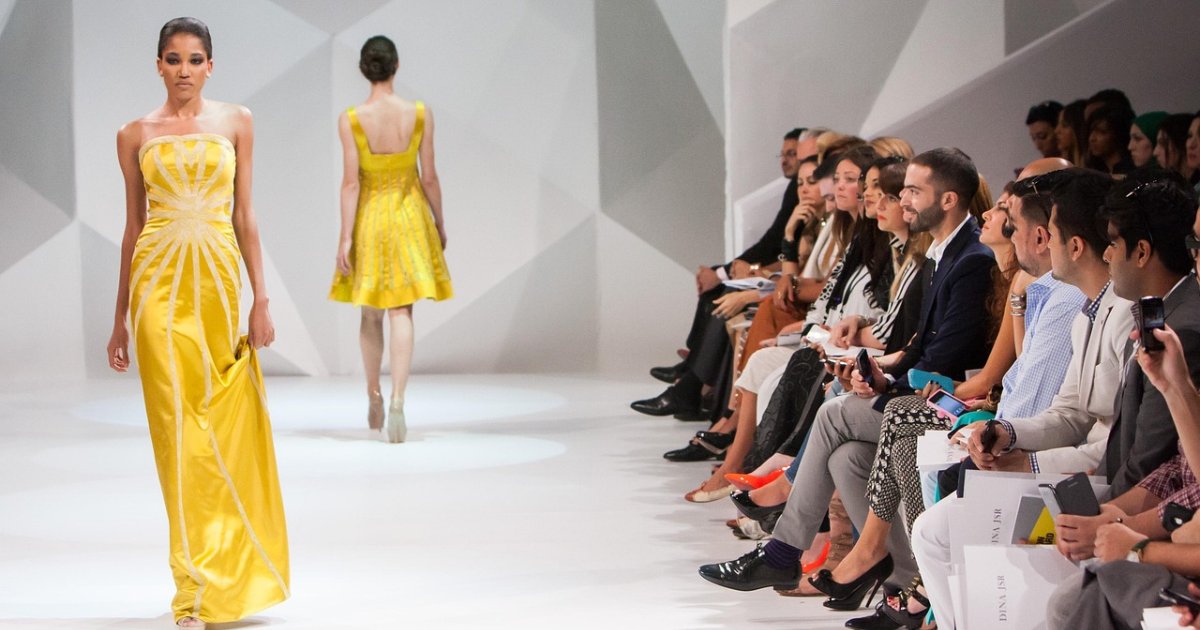Trends and Technology Blend at New York Fashion Week

By Mark Seavy
Nostalgic fashion and artificial intelligence (AI) were in vogue at the recent New York Fashion Week (NYFW).
This focus on the blending of trends and technology comes as the fashion industry grapples with tariffs and as the luxury business has struggled amid tighter consumer spending. And as fashion brands continue to expand into other categories through collaborations and licensing deals, these new styles are also expected to affect everything from sports to lifestyle.
On the nostalgia side, Ralph Lauren, Calvin Klein (making its first appearance on NYFW runways since 2018), and Coach gained attention.
Ralph Lauren’s women’s business, in particular, is forecast to hit $2 billion in revenue this year due to customers that “shop frequently and are engaged” while also being the “least price sensitive,” said Ashley Helgans, an Equity Analyst at Jefferies. Polo is the biggest and fastest growing line as the company has developed into a “premium destination” from an opening price point position, she said. Ralph Lauren handbags have hit a “sweet spot price point” at $500-$1,500 with sales in Asia driving the category, Helgans said.
Plaid designs also tapped into nostalgia, pulling inspiration from everything from Angela Chase’s grungy flannel in My So-Called Life to Cher Horowitz’s fashion-forward sets in Clueless to Rory Gilmore’s preppy Chilton uniform in Gilmore Girls. This trend was on full display throughout NYFW, with showgoers wearing a variety of plaid designs and Coach Creative Director Stuart Vevers fielding plaid blazers in gray, tan, and white that were said to evoke the patina of New York Buildings. The blazers were paired with coin purses and clutches.
Designer Allina Liu positioned women at the forefront of her Spring 2026 “Memorandum” collection and incorporated classic IPs from the art and entertainment categories. Liu’s women’s apparel borrowed from modernist artist Georgia O’Keefe’s watercolor designs, while also appearing to pay homage to the film The Silence of the Lambs.
“Given the current social political climate, I really wanted to focus on women and empowering women,” Liu told Fashionista. “I know that sounds so cliché, but I did it in a little bit of an odd way.”
Beyond nostalgia dressing, NYFW also spotlighted emerging designers. The Parsons School’s Master of Fine Arts and Fashion (MFA) featured 15 graduating students previewing a variety of styles, many underscoring the importance of wearability with zippers used to replace corsets. The Fashion Institute of Technology (FIT) kicked off NYFW on September 9 with a show for Master of Fine Arts in Fashion Design students that featured the latest trends, along with vintage and thrifted pieces. FIT’s ‘Act 5’ featured the works of 18 designers, only five of which went down the runway at the event.
But perhaps the biggest trend at this year’s New York Fashion Week was AI, with brands like Ralph Lauren debuting innovations using the technology.
Lauren, which was among the first major fashion companies to sell online 25 years ago, launched Ask Ralph, an AI assistant that engages customers to get a sense of their styles, including how to coordinate an outfit around a specific blazer or whether black and brown should be paired together. Lauren is working with Microsoft and OpenAI inside its shopping app.
“Part of fashion is exposing yourself to newness and evolving,” said David Lauren, Chief Innovation Officer at Ralph Lauren, told Fashionista.
And Vivrelle, a membership club that allows subscribers to rent designer handbags, recently launched its AI tool, Ella, to offer styling advice and suggest not only Vivrelle’s products to members but also complimentary clothing items from partners like Revolve and FWRD.
Yet the innovation around artificial intelligence is grounded by the reality of tariffs imposed on goods exported from Far East factories, a major source of fashion goods.
For PVH, which owns the Calvin Klein and Tommy Hilfiger brands, tariffs so far have added $70 million in costs to the business, half of which will be “mitigated,” CFO Zachary Coughlin said at a recent Goldman Sachs investor conference.
Tapestry, meanwhile, has suffered a “significant increase” in costs tied to the tariffs, but so far has held the line on wholesale price increases for Coach, Kate Spade, and other brands, CEO Joanne Crevoiserat said. Tapestry, whose handbags and leather goods account for about 80% of its annual revenue, has reduced manufacturing in China to 6% of total production (down from 35% 10 years ago), she said. Tapestry product is made at 41 facilities across eleven countries.
“We had a significant impact from the tariffs,” Crevoiserat said. “Even with the significant increase in costs due to tariffs, we’re growing our operating margin this year. And we have great confidence in our ability to grow both gross margins and operating margins in fiscal 2027 and beyond. We could take more price [increases] early. But we have brand heat and momentum. There are options available, but just because we can do that doesn’t mean that we should.”




